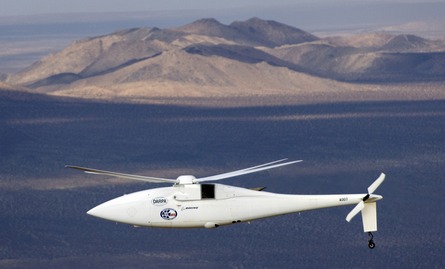Boeing has completed a 12h flight of the A160T Hummingbird unmanned rotorcraft as it pushes towards the goal of demonstrating at least 18h endurance by year-end. The company believes the turbine-powered A160T can exceed 20h, making it a viable alternative to fixed-wing endurance unmanned air vehicles such as the General Atomics MQ-1 Predator.
For the 12.1h flight on 12 October, the A160T carried a 230kg (500lb) payload. This followed an 8h flight with a 455kg payload in an underfuselage pod. The helicopter will carry a 135kg payload for the 18h flight. This will complete Phase 1 of the programme, and Boeing is negotiating with the US Army and Defense Advanced Research Projects Agency to extend the demonstration.

© Boeing
Separately, the A160T has been selected as the platform for three DARPA sensor demonstrations: the Aacer conformal electronically scanned array radar Argus wide-area video sensor and Forester foliage-penetration radar.
Flights with an aerodynamic shape representing the Forester radar under the fuselage are planned by year-end, says Grady Eakin, director, advanced systems business development. Syracuse Research is developing the UHF radar, which is intended to detect and track people and vehicles moving under foliage.
Eakins says Forester flight tests on the A160T are planned for 2008. The radar is flying on a UH-60 helicopter, but the A160T's retractable gear will allow the antenna to rotate, he says. The synthetic-aperture radar is designed to scan a 90º sector every 20-80s and detect moving targets out to 20km (11nm) from 20,000ft (6,100m).
Aacer flight tests are scheduled to begin in February 2008, says Eakins. Raytheon is developing the small Ka-band active-array radar, which will provide interleaved high-resolution SAR and ground moving-target indication while also using the electronically steered beam for wideband communication.
Argus flight tests are planned for fiscal year 2009. BAE Systems has been awarded the contract to develop the "gigapixel" video sensor, which will be housed in a pod under the A160T. Argus is intended to provide a minimum of 50 Predator-like steerable sensor "beams" simultaneously within a field of view of at least 45º (Flight International, 9-15 October).
Source: Flight International























